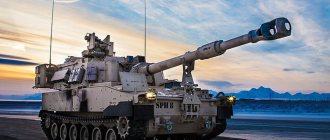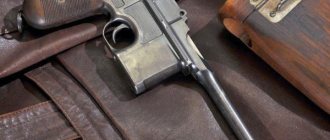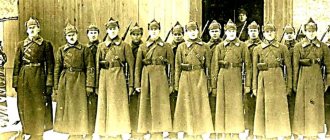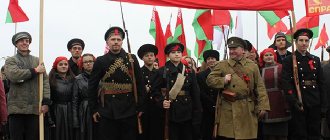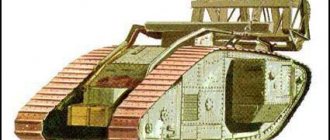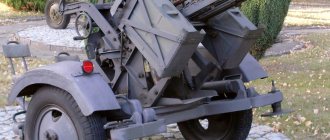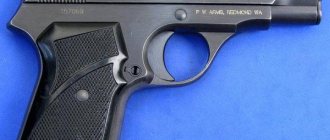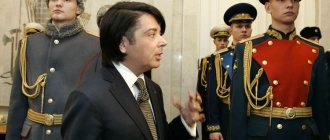Home » Real story » History of Wars » Machine gun cart
History of Wars
byakin 05/08/2019 2480
15
in Favoritesin Favoritesfrom Favorites 7
This material is being posted on the website for the 99th anniversary of the creation of the Workers 'and Peasants' Red Army.
Biography
Mounting machine guns on carts is not a Russian invention.
The British used something similar at the end of the 19th century in Africa against the local population. Carts were also known in the German army during the First World War. In the Red Army, such technical means began to be used from the beginning of 1918. One of the creators of the red cavalry S.M. Budyonny recalled that the first phaetons for carts were confiscated from the rich, and only later they began to make carts in a factory manner. The enemy also made extensive use of carts. They gained particular popularity among the Makhnovists, in the wide Ukrainian steppes, where they were also used as an ordinary vehicle - this made the units highly mobile.
The origin of the Russian name is still debated. It is documented: in the Red Army of the 1930s, carts were called “Tavrichankas” - in honor of Tavria, where they were actively used. But this does not change the essence of a four-wheeled wooden spring cart (chaise, tarantass, phaeton) with a machine gun mounted on it. Up to four fast horses were harnessed to the cart; the crew consisted of two or three people: a driver (also a reserve machine gunner), a machine gunner and an assistant machine gunner. In a war that was maneuverable in nature, where cavalry often determined the outcome of battles, the cart was indispensable. Moreover, in off-road conditions and a lack of modern military equipment, installing a machine gun (most often a Maxim system) on a cart was the simplest solution. In winter, machine guns were carried on sleighs.
With high maneuverability, the carts also had another significant advantage - constant combat readiness. On the march, in a parking lot, or in the event of a surprise enemy attack, the machine gunners, without hesitation, could open fire without lengthy preparation.
Queen of the steppes
In the war with an unstable front line against small detachments of Whites and Petliurists, Makhno’s superweapon did not allow Makhno’s superweapon to realize its full potential. But then the rebels encountered large forces of the Armed Forces of the South of Russia, as Anton Denikin’s White Army was then called.
In the fall of 1919, Denikin was already in full swing from the south to Moscow, reaching Orel in mid-October. The Bolsheviks began to move their state institutions to Vologda, and in Moscow they even formed an “underground regional party committee.”
It was at this moment in the Ukrainian steppes, in the rear of Denikin, that Makhno actively intervened in the situation, at that time calling on the peasants to form an alliance with the Moscow Bolsheviks against the common enemy - the White Guards. The Makhnovists were a formidable force: 32–33 thousand bayonets, 7 thousand sabers, 80 cannons and 800 machine guns. All this army moved on 12 thousand carts and chaises.
On September 26, 1919, Denikin’s units squeezed the Batka’s partisan detachments near Uman from the south and east. From the north and west, the Makhnovists were limited by the military forces of the Ukrainian People's Republic (UNR) and Symon Petliura. The anarchists concluded a truce with Petliura and counterattacked the White Guards near the village of Peregonovka, covering themselves with fire from Kozhin’s cart regiment. The latter almost completely wiped out three officer regiments, hitting hundreds of volunteers from former high school students and “realists” from educational institutions in Kharkov, Odessa, and Nikolaev with their fire. And then the rebel cavalry rushed to finish off the defeated enemy.
Denikin's troops lost almost 20 thousand soldiers. Another 5 thousand people - mobilized peasants - were disarmed by the Makhnovists and sent home.
“The honor of victory over the Denikin counter-revolution in the fall of 1919 belongs mainly to the Makhnovists,” wrote the writer and journalist Pyotr Arshinov, a witness of the battle of Peregonovka and one of the comrades-in-arms of the steppe father.
Anarchist leader Nestor Makhno (sitting in the center surrounded by his comrades) and his commanders came up with the idea of turning an ordinary cart into a formidable weapon / Photo: DR
Makhno put the infantry on carts and carts and rushed into the breakthrough. The rebels carried out a swift raid and two days later they took Krivoy Rog, Nikopol and Aleksandrovsk (now Zaporozhye). And then - Berdyansk, Melitopol and Mariupol. As a result, in just a week and a half, the father’s army cleared the south of Ukraine of supporters of the Russian monarchy.
To liquidate the peasant army, Denikin removed the most combat-ready units from the front. Because of this, he was never able to organize an attack on Moscow. “The situation was becoming formidable and required exceptional measures. To suppress the uprising, it was necessary, despite the serious situation of the front, to remove units from it and use all reserves, the head of the Armed Forces of Southern Russia himself wrote in his memoirs. “This uprising, which assumed such wide proportions, upset our rear and weakened our front at the most difficult time for it.”
The Bolsheviks took advantage of the situation and went on the offensive themselves. “It appears that our progress will be quite rapid. Denikin certainly broke his neck on a Ukrainian peasant,” wrote Grigory Ordzhonikidze, a member of the Revolutionary Military Council of the Red 14th Army, in a letter to Vladimir Lenin, the leader of the Bolsheviks.
Makhno and his army subsequently fought against Denikin in the Ukrainian steppes with varying degrees of success, losing control of much of the territory they had captured.
This continued until the autumn of 1920, when the ataman of the steppe freemen concluded his second and last alliance with the Bolsheviks, playing an important role in the latter’s seizure of Crimea.
The Red Army adopted the tactics of the steppe fighters of Nestor Makhno, deciding to use carts against the Poles. But in their case they did not live up to expectations / Photo: DR
Tactics
The tactics for using carts in cavalry combat were simple - ride to the flanks of the enemy position, turn around and open fire. Sudden machine-gun fire from the flank or rear almost always demoralized the enemy, in whose camp panic began. The cart was also used for shooting from cover. The tactic of “rolling” is known, when part of the carts fired, while the other at that time moved to a new firing position.
The crews of the carts had to have desperate courage, since no protection was provided except for a small machine-gun shield. The losses were great. In military literature, there were discussions on the feasibility of armoring carts, but experts came to the conclusion that the weight of the cart would become too heavy for the horses, and the cart would lose mobility.
Carts were indispensable during retreat, as they allowed troops to retreat without stopping firing. The speed of the carts could reach 40 km/h, which, however, excluded targeted shooting. Therefore, spectacular film footage is rather an attempt to pass off wishful thinking. The springs, of course, softened the shocks when the cart moved, but most of the bullets ricocheted at a distance of up to 1000 steps. Therefore, the instructions prescribed firing either from a cart standing still, or while moving at a walk along a flat road.
History[ | ]
Captured Russian heavy machine guns on a horse carriage, Berlin.
Understanding the importance of machine guns in battle, their movement during the battle and the supply of ammunition, the Russian army designed and tested carts - machine gun and cartridge gigs, which was reported.
… 4. Machine gun
and cartridge
gigs
have been designed, tested and found to be so mature that it is considered possible to proceed with bulk orders of them...[2]— From the Most Submissive Report on the War Ministry on the activities and state of all branches of military administration for 1909.
During the First World War, the Maxim machine gun and its crew traveled on an artillery-type cart. However, such a cart, being unsprung, was not intended for forced marches along with cavalry detachments. During the Civil War, the fronts were extremely stretched and cavalry, which by that time was mainly used for reconnaissance and raids behind enemy lines, began to be used to break through weakly defended sections of the enemy’s defensive lines. So-called cavalry armies appeared, moving at considerable speed, similar to the tank armies of World War II. The cart, that is, a sprung cab-type cart, unlike a baggage cart, could keep up with the cavalry, and the softness of the ride made it possible to conduct targeted machine-gun fire on the move; this is the main role of the cart. Mounted armies used machine gun fire to cover their saber attacks.
Due to the absence of a significant number of light machine guns on the fronts of the civil war, when carrying out a saber attack on enemy positions, the carts entered the flanks and, turning around, hit the enemy with crossfire. Armored vehicles from the First World War were generally not capable of off-road driving, and such a maneuver was not practical in many cases. Like other types of cavalry, carts were an excellent target, easily destroyed by small arms fire or artillery. The successes of the Red Army Cavalry Armies during the Civil War were based on the fact that the Whites did not have a sufficient number of machine guns and armored vehicles and the overall small number of the White armies.
Strategy
In 1928, when the People's Commissar for Military and Naval Affairs was a veteran of the 1st Cavalry Army K.E. Voroshilov, a 1926 model cart drawn by four horses, was officially adopted by the cavalry units of the Red Army. When driving carts, the bolts and nuts became loose, which is why they needed to be tightened every 32-53 km, and the wheels had to be lubricated every 50 km. Four horses needed food, so the state was supposed to carry a daily food allowance on a cart - 2 bags of oats with a total weight of 26.2 kg. At the same time, the total weight of the cart with its crew was approaching a ton. In the manufacture of cart parts, ash, birch, oak, and pine were used. There were also a lot of metal parts.
The carts survived until the Great Patriotic War, and they were withdrawn from service only with the abolition of cavalry as a branch of the military in the 1950s. By the way, there were special carts adapted for air defense, with a machine gun mounted at an angle.
WRITER'S OPINION
Machine gun carts during the Great Patriotic War
In the terrible year of 1941, when the German army came so close to Moscow that Wehrmacht officers could see large buildings in the city center from field binoculars, a parade of troops took place on Red Square. The machine-gun carts standing in front of the exit to Red Square were ready to move. There were four carts in total, each of which was harnessed to four white horses. It would seem that in the age of motors, the fate of the cart as a full-fledged combat weapon was predetermined. However, in August 1944, machine-gun carts entered the city of Bucharest. They passed all the difficult trials of the Great Patriotic War with honor.
Machine-gun carts before the parade on Red Square. November 7, 1941
Machine gun carts on the streets of Bucharest. August 1944
Soviet troops on one of the streets of the liberated city of Szeged, 1944.
Source: Rem Ulanov “Machine-gun cart” // Equipment and weapons No. 12/2004
“The axis of mysterious and crafty strategy...”
“Popov’s, the most ordinary assessor’s britzka, at the whim of civil strife, entered the situation, became a formidable and mobile means of combat, created a new strategy and new tactics, distorted the usual face of war, gave birth to heroes and geniuses from the cart. Such is Makhno, who made the carriage the axis of his mysterious and crafty strategy, abolished the infantry, artillery and even cavalry and, in return for these clumsy hulks, screwed three hundred machine guns to the chaises. This is Makhno, as diverse as nature. Carts with hay, forming in battle formation, take possession of the cities. The wedding cortege, approaching the volost executive committee, opens concentrated fire, and the stunted priest, scattering the black banner of anarchy over himself, demands that the authorities hand over the bourgeoisie, hand over the proletarians, wine and music.
An army of carts has unheard of maneuverability.
Budyonny showed this no worse than Makhno. It is difficult to cut down this army; to catch it is unthinkable. A machine gun buried under a stack, a cart taken to a peasant's hut - they cease to be combat units. These buried points, assumed but not tangible components, add up to the structure of a recent Ukrainian village - ferocious, rebellious and self-interested. Makhno brings such an army, with ammunition scattered in the corners, into a fighting state in one hour; it takes even less time to demobilize her.”
Isaac Babel. Cavalry
VIEW OF CULTURAL MASTERS
Gallery[ | ]
- The remains of a cart that was in the forest.
- Part of the original copy of the drawing “New type of carts” in blue.
- Restoration of a cart at GVTM.
- Restored cart in GVTM.
- Tension details.
- Fastening a machine gun and machine gun belt boxes.
- Details under the cart.
- Forage box and serial number "0001".
Notes[ | ]
- Mobile fire weapon of the early 20th century (unspecified)
. btgv.ru. Access date: January 13, 2022. - Website Project “Historical Materials”, From the Most Comprehensive Report on the War Ministry on the activities and state of all branches of military administration for 1909.
- Tavrichanka
- ↑ 12
Carriage House. Encyclopedia. Horse-drawn carriages Archived March 13, 2007 on the Wayback Machine - P. A. Arshinov. "History of the Makhnovist movement"
- Vasmer's Etymological Dictionary, p. 702
- Tachanka. The wooden cart was ideal for the tactics of the civil war and Russian off-road conditions. Rossiyskaya Gazeta (01/01/2017)
- A. I. Denikin “Essays on Russian Troubles”
- “Syrian turning point” in Murmansk: militants’ medical cards, “coffin on wheels” and werewolf trucks Komsomolskaya Pravda (04/22/2019)
- The Iraqi military created a “hellish cart” from a truck and a Zvezda tank (04/06/2017)
Cultural heritage[ | ]
| The section lacks links to sources. Information must be verifiable or it may be deleted. You can edit the article to add links to authoritative sources. This mark was set on December 1, 2014 . |
The Tachanka became one of the symbols of the Civil War. She is mentioned in several songs. Separately, we should highlight the popular song “Tachanka” (composer Konstantin Listov, lyrics by Mikhail Ruderman), performed by the Song and Dance Ensemble of A. Alexandrov. The last verse of this song in the 1936 version sounded like this:
Tanks are rumbling on the ground, Planes are making loops, Pilots are singing about the Budyonnovskaya cart in the sky. And the enemy still dreams of leaden and thick rain, a war chariot, a young machine gunner.
The Tachanka is dedicated to Isaac Babel’s story “The Teaching of the Tachanka,” included in the collection “Cavalry” (1924).
The 2015 computer game Tom Clancy's Rainbow Six Siege features a playable operative of Russian ethnicity named Tachanka with the ability to mount a DP machine gun on a tripod machine.
- Image gallery
- Mitrofan Grekov, “Tachanka”, 1925.
- Mitrofan Grekov, “Tachanka (Travel to position).” 1933
- Monument "Legendary Cart".
- A memorial stele with a cart in the city of Kamensk-Shakhtinsky.
- Bas-relief of a cart on one of the houses on Budennovsky Prospekt, Rostov-on-Don.
- USSR postage stamp, 20 years of the Red Army, 1938, stylized frame from the film “Chapaev” (1934), part of the cart is visible.
- 30th anniversary of the film “Chapaev” (directed by the Vasilyev brothers, 1934). Still from the film: V.I. Chapaev on a machine-gun cart, artist E. Beketov (CFA [JSC “Marka”] No. 3130).
- Tachanka on a USSR postage stamp, 1969: 50 years of the First Cavalry.
- Tachanka-Rostovchanka monument
